Coffee Knowledge Lists
-
Basic knowledge of boutique coffee the life journey of coffee

Generally speaking, it is generally accepted that coffee was first found in Abyssinia, which is now Ethiopia. According to rumors, an Abyssinian shepherd found that the goat he was raising began to dance after eating some bright red fruit and leaves. Among the facts discovered by Kaldi, some monks can watch in order to make a late-night prayer meeting.
2014-11-21 Coffee knowledge coffee basics coffee common sense -
Basic knowledge of fine coffee basic knowledge of coffee growth

Coffee is a kind of drink, which gives the public the impression that it is black, bitter, sleepless and excited. The coffee beans we see in the coffee shop are tea-brown, which belongs to roasted coffee beans, while the color of the coffee liquid is amber. Coffee comes from coffee beans, which are harvested and processed from the fruit of trees. The growth habit of coffee: coffee
2014-11-21 Coffee knowledge boutique coffee coffee common sense coffee growth -
Introduction to three kinds of coffee beans in boutique coffee science

At present, the main species of coffee plants growing in different regions of the world include the following: ARABICA/ROBUSTA/LIBERICA/DEWEVREI/STENOPHILLA/CONGENSIS/ABEOKUTAS/KLAINII/ZAANGUEBARIAE/RACEMOSA. Among them, the most commonly used coffee is divided into three categories: small seed coffee beans (Arabica) and medium seed coffee beans (Robusta).
2014-11-21 Coffee knowledge boutique coffee science coffee bean types -
Boutique coffee Indonesia national treasure coffee bean Tonaga

Light green unroasted raw Toraja coffee beans, round and plump. Each barrel of Toraja coffee beans has a birth number. Generally, coffee beans are half lentils (left) and Tonaga beans are full whole beans (right). This bucket of 1.5kg Indonesian Toraja coffee beans is worth 2000 Hong Kong dollars. Producing area: Tonaga (Tana Tor) in southwestern Sulawi (South Sulawesi), Indonesia
2014-11-20 Coffee knowledge boutique coffee coffee bean tonaga -
Boutique coffee beans recommend CoE competition to win over coffee beans
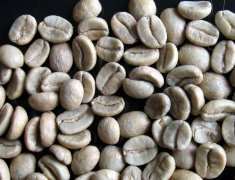
OE (Cup of Excellence) competition wins coffee beans Nicaragua Nicaragua 2005 CoE (Cup of Excellence) competition wins coffee beans, that is, winning coffee beans in the competition, the output is very small, relatively rare. The appearance is very neat, basically do not need to pick, it is recommended to bake around the middle of the bean, cinnamon roast cinnamon baking degree. Nicaragua Nica
2014-11-20 Coffee knowledge boutique coffee beans coffee beans distinguish oE (Cup of) -
Coffee beans recommend Ethiopian (mocha) coffee beans

Ethiopia (Ethiopia) is one of the major producers of Arab coffee beans in Africa, producing the best Arab mocha beans in the world. It is said that coffee beans were first discovered by shepherds in the Kafa region of Ethiopia, and the name of coffee evolved from Kafa, so Ethiopia is still the hometown of coffee. Production and processing of coffee beans in Ethiopia
2014-11-20 Coffee knowledge coffee beans Ethiopia mocha coffee beans -
Basic knowledge of coffee varieties of raw coffee beans

Coffee is the first tropical cash crop in terms of output, consumption and economic value among the three major beverages in the world. it is the second raw material after international trade relay oil, and it is also one of the largest tropical food raw materials in the world. The coffee variety garden covers an area of 3 mu, which mainly lies in the collection and preservation of coffee variety resources. the varieties are carried out on the basis of the observation of its botanical and biological characteristics.
2014-11-20 Coffee knowledge coffee basics coffee common sense coffee raw beans coffee varieties -
Boutique coffee learn Elephant bean coffee beans (raw beans)

Although all kinds of raw coffee from all over the world have their own taste, they are almost the same size, whether they are Robbins or Arabica beans. However, giant coffee beans (Elephant bean) are an exception, which is three times or more larger than other coffee beans. The taxonomic name of this giant coffee bean is Maragogype, which comes from
2014-11-20 Coffee knowledge boutique coffee science coffee raw beans -
The origin of boutique coffee introduces Santos, Brazil.

Brazil is located in South America, about 15 degrees south latitude. Brazilian coffee culture began in 1727 and sprang up in the north of Brazil when a Mr. Francesco de MeloPalheta smuggled coffee seeds from France to Brazil. At that time, this was strongly opposed by the French who monopolize the coffee business today. Those seeds are the ancestors of more than 300 million Brazilian coffee trees today. In the early morning
2014-11-20 Coffee knowledge boutique coffee coffee producing area Santos Brazil -
Boutique Coffee Common sense about the Grade of Blue Mountain Coffee

According to the law, only beans produced in the Blue Mountain area can be called Blue Mountain Coffee. High-quality Blue Mountain Coffee is divided into three grades: No. 1 (more than 17cm 18 mesh), No. 2 (16 mesh) and No. 3 (15 mesh), with 17 mesh equivalent to 17x64 inches; their taste (all confirmed by dental sales plus government-approved professional cups) are all the same, but of different sizes.
2014-11-20 Coffee knowledge boutique coffee Blue Mountain Coffee Coffee Grade -
Introduction of boutique coffee varieties Pacamara (Pacamara)
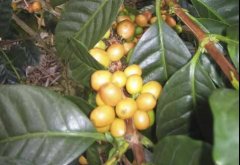
Pacamara coffee is a hybrid of Pacas Pacas (a sudden variant of the bourbon species) and giant bean Maragogype (a sudden variant of the Tibica species found in Brazil) found in El Salvador in the 1950s. The coffee tree is very tall, the branch spacing of the trunk is wider than that of Pacas Pacas, and the edge of dark green leaves is wavy. It is suitable for cultivation at the elevation of 900m to 1500m.
2014-11-20 Coffee knowledge boutique coffee varieties Pacamara -
A brief introduction to Coffee Tree, Coffee Flower and Coffee Fruit
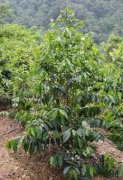
The coffee tree is an evergreen tree with small white flowers and green fruit that does not turn red until it is ripe. A normal coffee tree can usually grow to a height of 5 to 10 meters, but bean farmers often prune it to less than 2 meters for harvest convenience. After flowering, there are many dark green oval fruits, and the mature fruits change from dark green to bright red, due to the color and cherry.
2014-11-20 Coffee knowledge boutique caffeine coffee tree coffee flower coffee fruit -
Espresso is the quintessence of coffee.

In terms of pure sensory entertainment, there are few experiences in daily life that can be comparable to a good cup of coffee. The charming fragrance of a cup of hot, smoking coffee just brewed from freshly roasted beans can pull sleeping people out of bed and lead passers-by into the cafe. There are millions of people around the world who are not caused by caffeine in their coffee for a while.
2014-11-20 Coffee knowledge boutique coffee espresso -
Boutique coffee anecdotes about Italian coffee drinking

When Italians drink coffee, they have to stand up. Italians love coffee, so cafes are everywhere. But you may not know that authentic Italian coffee is drunk standing up. It turns out that Italy is narrow and densely populated, with an inch of land and gold. If so many cafes were seated, it would not only occupy an area of land but also cost money. So they chose to drink it standing up. Anyway, the authentic Italian steamed coffee is very strong.
2014-11-20 Coffee knowledge boutique coffee Italian coffee -
A brief introduction to the basic knowledge of Coffee beans
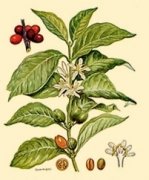
There are about 60 species of coffee in the world, of which only 25 species are cultivated to make coffee, of which only 4 species are used as commercial coffee: large fruit coffee (Coffea liberica), medium fruit coffee (Coffea canephora), small fruit coffee (Coffea arabica) and high yield coffee (Coffea dewevrei). These are botanical names. Coffee in the world at present
2014-11-20 Coffee knowledge boutique coffee science coffee beans -
The production of coffee beans with basic knowledge of fine coffee
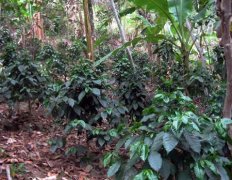
Coffee trees take 3-5 years from planting to fruiting. 6-10 years of coffee trees are the most likely to bear fruit, about 15-20 years, is the harvest period. Coffee trees are usually bred in nurseries and grow into saplings, and then moved to coffee farms a year later, in full compliance with the way the Arabs planted and cultivated coffee trees. Coffee trees will continue to take root downward and upward in the first four or five years of their growth.
2014-11-20 Coffee knowledge coffee knowledge coffee basics coffee bean production -
Boutique Coffee Common sense Coffee where are male and female coffee beans

Chickens can be divided into cocks and hens, but are there any differences between male and female eggs? Recently, the saying of public beans and mother beans is quite popular. A friend who has just returned from Bali, Indonesia, and the bar manager of a five-star hotel both talked about it with me. The former said that when she went to Bali, the locals recommended public beans to her and did a cup test on the spot. The taste of male beans is obviously better than that of mother beans; the latter boasts to me that they supply
2014-11-20 Coffee knowledge boutique coffee knowledge coffee beans -
World champion of coffee production, Brazilian coffee.

The cultivation of Brazilian coffee began more than 280 years ago in 1727. Legend has it that the handsome army officer Pacita was sent to French Gaiana to mediate the territorial dispute between France and the Netherlands. The wife of French Gaiana actually fell in love with him and gave him a bag of bourbon coffee seeds. Right after Parcia returned to Brazil, Para changed his career as a coffee farmer and began to grow coffee.
2014-11-20 Coffee knowledge coffee production Brazilian coffee -
Fine coffee learn what organic coffee beans are.

In many parts of the world, growers use pesticides to control the growth of coffee pests, and moist and foggy coffee at high altitudes are more vulnerable to fungi, so growers often use pesticides to treat them. Many people believe that coffee can be called organic coffee as long as synthetic pesticides, herbicides and chemical fertilizers are not used during coffee growth. in fact, it is only in third parties (except coffee makers and producers).
2014-11-20 Coffee knowledge boutique coffee science organic coffee beans -
The grading system of giving priority to defects in the size of boutique Blue Mountain Coffee

Although the output of Blue Mountain Coffee is very small, it has a strict grading system, even if it is produced in the legal Blue Mountain area, it should be graded according to the size of beans and the proportion of defects. Blue Mountain No.1 Blue Mountain No. 1 bean type: 96% above 17 Blue 18 eyes defective bean proportion: 2% Blue Mountain No.2 Blue Mountain 2 bean type: 96% above 16 inch defective bean proportion: 2% Blue
2014-11-20 Coffee knowledge Blue Mountain Coffee Coffee Bean defects grading system
